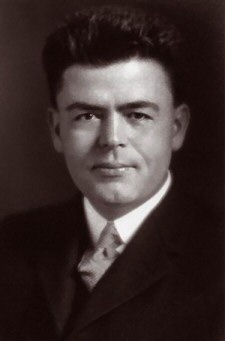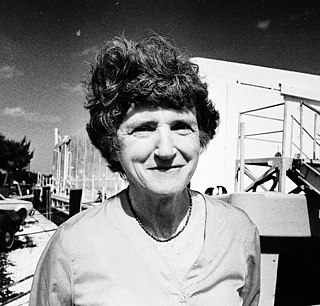Related Research Articles

Spencer Fullerton Baird was an American naturalist, ornithologist, ichthyologist, herpetologist, and museum curator. Baird was the first curator to be named at the Smithsonian Institution. He eventually served as assistant Secretary of the Smithsonian from 1850 to 1878, and as Secretary from 1878 until 1887. He was dedicated to expanding the natural history collections of the Smithsonian which he increased from 6,000 specimens in 1850 to over 2 million by the time of his death. He also served as the U.S. Commissioner of Fish and Fisheries from 1871 to 1887 and published over 1,000 works during his lifetime.

The National Museum of Natural History (NMNH) is a natural history museum administered by the Smithsonian Institution, located on the National Mall in Washington, D.C., United States. It has free admission and is open 364 days a year. With 4.4 million visitors in 2023, it was the third most-visited museum in the United States.

Tarleton Hoffman Bean was an American ichthyologist.

Rosa Smith Eigenmann was an American ichthyologist, as well as a writer, editor, former curator at the California Academy of Sciences, and the first librarian of the San Diego Society of Natural History. She "is considered the first woman ichthyologist in the United States." Eigenmann was also the first woman to become president of Indiana University's chapter of Sigma Xi, an honorary science society. She authored twelve published papers of her own between 1880 and 1893, and collaborated with her husband, Carl H. Eigenmann, as "Eigenmann & Eigenmann" on twenty-five additional works between 1888 and 1893. Together, they are credited with describing about 150 species of fishes.
George Sprague Myers was an American ichthyologist who spent most of his career at Stanford University. He served as the editor of Stanford Ichthyological Bulletin as well as president of the American Society of Ichthyologists and Herpetologists. Myers was also head of the Division of Fishes at the United States National Museum, and held a position as an ichthyologist for the United States Fish and Wildlife Service. He was also an advisor in fisheries and ichthyology to the Brazilian Government.
Storrs Lovejoy Olson was an American biologist and ornithologist who spent his career at the Smithsonian Institution, retiring in 2008. One of the world's foremost avian paleontologists, he was best known for his studies of fossil and subfossil birds on islands such as Ascension, St. Helena and Hawaii. His early higher education took place at Florida State University in 1966, where he obtained a B.A. in biology, and the University of Florida, where he received an M.S. in biology. Olson's doctoral studies took place at Johns Hopkins University, in what was then the School of Hygiene and Public Health. He was married to fellow paleornithologist Helen F. James.

Carl Leavitt Hubbs was an American ichthyologist.

Starksia williamsi, the Williams's blenny is a species of labrisomid blenny known only from the Saba Bank in the Netherlands Antilles where it occurs at depths of from 15 to 28 m. It was previously known as Starksia lepicoelia, and is also closely related to Starksia weigti and Starksia robertsoni. It was named after Jeffrey T. Williams, a scientist from Smithsonian's National Museum of Natural History known for his work on Starksia. This species can reach a length of 2.1 cm (0.83 in). The specific name honours the ichthyologist Jeffrey T. Williams of the National Museum of Natural History who has worked extensively on the blenniiform fishes.

Leonard Peter Schultz (1901–1986) was an American ichthyologist.
Tyson Royal Roberts is an American ichthyologist. He has been described as "the world's foremost authority on Regalecus".
John Ernest "Jack" Randall was an American ichthyologist and a leading authority on coral reef fishes. Randall described over 800 species and authored 11 books and over 900 scientific papers and popular articles. He spent most of his career working in Hawaii. He died in April 2020 at the age of 95.
Lynne R. Parenti is an American ichthyologist. She serves as a Research Scientist and Curator of Fishes at the National Museum of Natural History of the Smithsonian Institution. Her specialty is the systematics and historical biogeography of freshwater and coastal fishes, and she has conducted research in this area for about thirty years.
Conservation and restoration at the Smithsonian Institution deals with the care of the 138 million artifacts located in the collections of Smithsonian Institution. Work is conducted by one research center, the Museum Conservation Institute (MCI), and by conservators at the Smithsonian's museums, galleries, zoo. Smithsonian conservators provide myriad services to their units, including exhibit preparation of the museum collection and loan objects, advising on object care, training for future generations of conservationists, engaging in routine preventive care on a daily basis, conducting research projects related to the collections, and examining objects for evidence of manufacturing techniques and previous restorations All conservation labs collectively further the mission of the Smithsonian Institution, "the increase and diffusion of knowledge." Founded in 1846 the Smithsonian is the world's largest museum and research complex, consisting of 19 museums and galleries, the National Zoological Park, and nine research facilities.

Luiz Alves Rocha is the Curator and Follett Chair of Ichthyology at the California Academy of Sciences. He is also an adjunct professor at the University of California Santa Cruz and San Francisco State University.

Mary Esther Rice was an American invertebrate zoologist specializing in systematics, evolution and the development of marine invertebrates. She worked at the Smithsonian Institution as a curator, educator, research advisor, and administrator from 1966 until her retirement in 2002. She is known for her work on the life histories of Sipuncula, as well as for serving as the first director of the Smithsonian Marine Station at Fort Pierce.
Mercedes Suarez Foster is an American zoologist who researched the evolution of lek behavior in birds, bird-plant interactions, and male-male cooperation in reproduction. She is very active in conservation efforts, including training workshops, being a Scientific Advisor for the National Bio-inventory Program of Paraguay, as a Founding Director of the American Bird Conservancy, and as a Founder and Co-coordinator of the Latin American Library Enhancement Program. She is also the Director and Editor of a program to publish handbooks giving "standard methods for measuring and monitoring the biodiversity of different groups of organisms".
Carole C. Baldwin is a research zoologist, curator of fishes, and the vertebrate zoology department chair at the National Museum of Natural History. She researches the diversity and evolution of coral reef and deep sea fishes through integrative taxonomy. She is on the board of directors of the National Aquarium in Washington, D.C
Donald Ray Davis was an American entomologist, specializing in Lepidoptera.
Ernest Albert Lachner was an American ichthyologist with an international reputation for his research on Indo-Pacific gobies and cardinalfishes.
Lawrence M. Page is an American ichthyologist. He is a principal scientist emeritus at the Illinois Natural History Survey, an affiliate professor at the University of Florida, and the Curator of Fishes at the Florida Museum of Natural History. He also served as the project director for iDigBio from 2011 to 2019. Over the course of his career he has published over 200 papers and nine books.
References
- 1 2 3 4 "Jeff Williams | Smithsonian National Museum of Natural History". naturalhistory.si.edu.
- ↑ "Jeffrey T. Williams retiring from USNM | American Society of Ichthyologists and Herpetologists". asih.org.
- ↑ "Williams, Jeff". profiles.si.edu. Retrieved 2021-01-13.